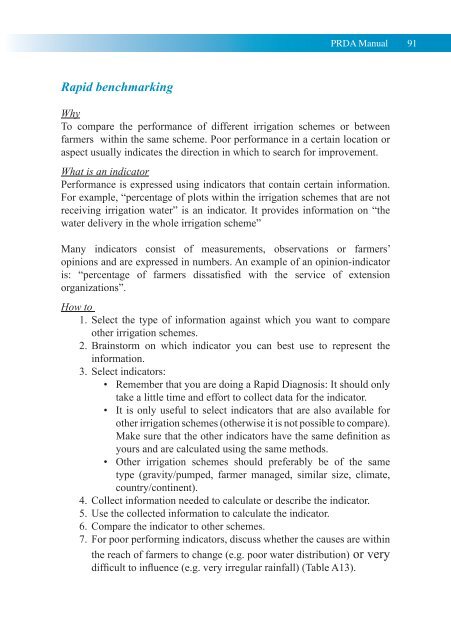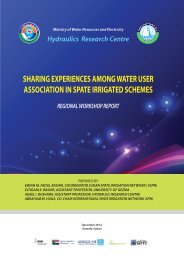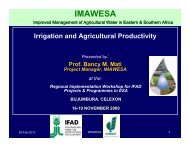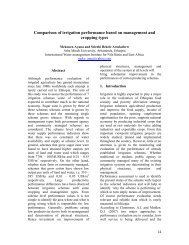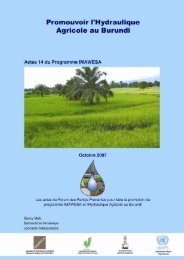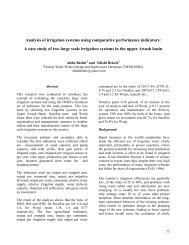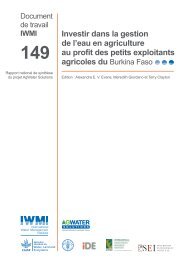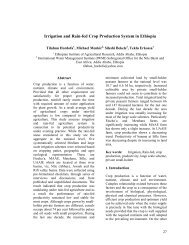Manual - Participatory rapid diagnosis and action ... - FAO.org
Manual - Participatory rapid diagnosis and action ... - FAO.org
Manual - Participatory rapid diagnosis and action ... - FAO.org
You also want an ePaper? Increase the reach of your titles
YUMPU automatically turns print PDFs into web optimized ePapers that Google loves.
PRDA <strong>Manual</strong> 91Rapid benchmarkingWhyTo compare the performance of different irrigation schemes or betweenfarmers within the same scheme. Poor performance in a certain location oraspect usually indicates the direction in which to search for improvement.What is an indicatorPerformance is expressed using indicators that contain certain information.For example, “percentage of plots within the irrigation schemes that are notreceiving irrigation water” is an indicator. It provides information on “thewater delivery in the whole irrigation scheme”Many indicators consist of measurements, observations or farmers’opinions <strong>and</strong> are expressed in numbers. An example of an opinion-indicatoris: “percentage of farmers dissatisfied with the service of extension<strong>org</strong>anizations”.How to1. Select the type of information against which you want to compareother irrigation schemes.2. Brainstorm on which indicator you can best use to represent theinformation.3. Select indicators:• Remember that you are doing a Rapid Diagnosis: It should onlytake a little time <strong>and</strong> effort to collect data for the indicator.• It is only useful to select indicators that are also available forother irrigation schemes (otherwise it is not possible to compare).Make sure that the other indicators have the same definition asyours <strong>and</strong> are calculated using the same methods.• Other irrigation schemes should preferably be of the sametype (gravity/pumped, farmer managed, similar size, climate,country/continent).4. Collect information needed to calculate or describe the indicator.5. Use the collected information to calculate the indicator.6. Compare the indicator to other schemes.7. For poor performing indicators, discuss whether the causes are withinthe reach of farmers to change (e.g. poor water distribution) or verydifficult to influence (e.g. very irregular rainfall) (Table A13).


